Table of Contents
1. Introduction
2. Types of photography turntables and their uses
3. Photography turntable market overview for 2025
4. Key factors to consider when choosing a photography turntable
5. Leading photography turntable models and their standout features
6. Conclusion
Introduction
Photography turntables have become essential for showcasing products in a highly visual-driven market. These devices allow for 360-degree views of items, enhancing image presentations and giving potential buyers a comprehensive view of a product’s features. By automating the rotation of items, turntables streamline the process of capturing consistent, high-quality images. They can handle a range of product sizes, improving workflow efficiency while ensuring precision. For businesses, this can translate into improved product visuals, faster production times, and a stronger competitive edge in 2025’s market.
Types of photography turntables and their uses
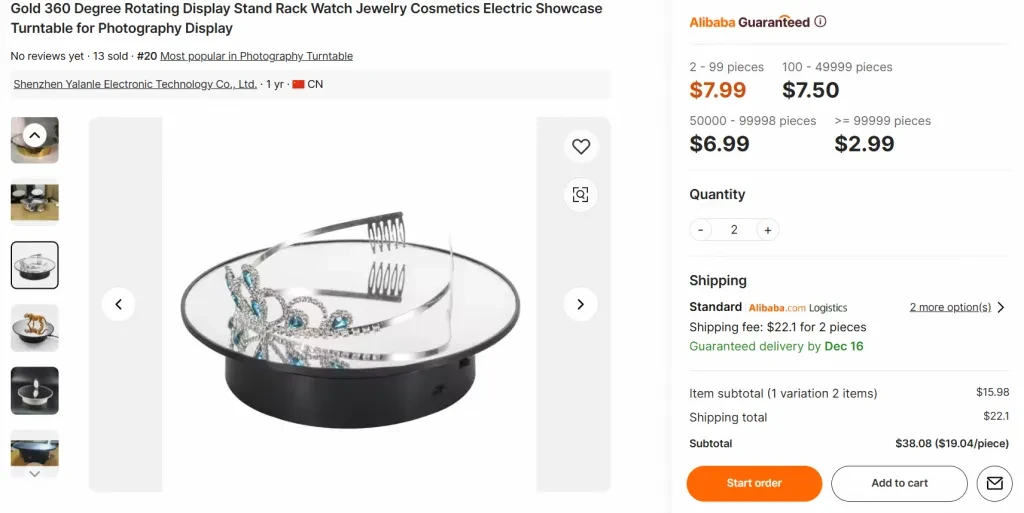
Manual vs. motorized turntables
Manual turntables are a simple and affordable option, offering basic rotational capabilities where the user manually adjusts the object between shots. These models are typically less expensive, making them ideal for small-scale projects or businesses starting with 360-degree photography. However, manual turntables can lack the consistency and speed needed for high-volume production. Frequent manual adjustments also increase the potential for inconsistencies in image capture, which can be time-consuming during post-production.
Motorized turntables, on the other hand, provide automated rotation, allowing objects to rotate smoothly without manual intervention. These turntables offer consistent results as the object rotates at a controlled, pre-set speed. The precision of motorized models, often adjustable to specific rotation intervals, makes them suitable for businesses that need efficiency and accuracy in their product photography
The decision between manual and motorized largely depends on the product volume and the desired precision level. While manual models may suffice for low-volume or lightweight items, motorized turntables, with their speed and reliability, are more appropriate for businesses looking to streamline their photography processes.
Computer-controlled turntables
Computer-controlled turntables represent the cutting edge of 360-degree product photography for businesses handling high volumes or larger products. These advanced models, such as the Iconasys Silver Series LRG, allow complete automation of the photography workflow. They are integrated with software that can control not only the rotation of the turntable but also the synchronization with cameras. This enables the capture of thousands of frames per rotation, ensuring optimal image resolution and quality.
Computer-controlled turntables are ideal for businesses requiring high precision and handling heavier objects. The integration of computer control also facilitates smoother transitions between shots, and users can control the speed and direction of the rotation remotely, ensuring minimal interruptions during photo sessions. For businesses focusing on large-scale e-commerce or product catalogs, computer-controlled turntables offer an indispensable solution for maintaining both speed and consistency in production.
Photography turntable market overview
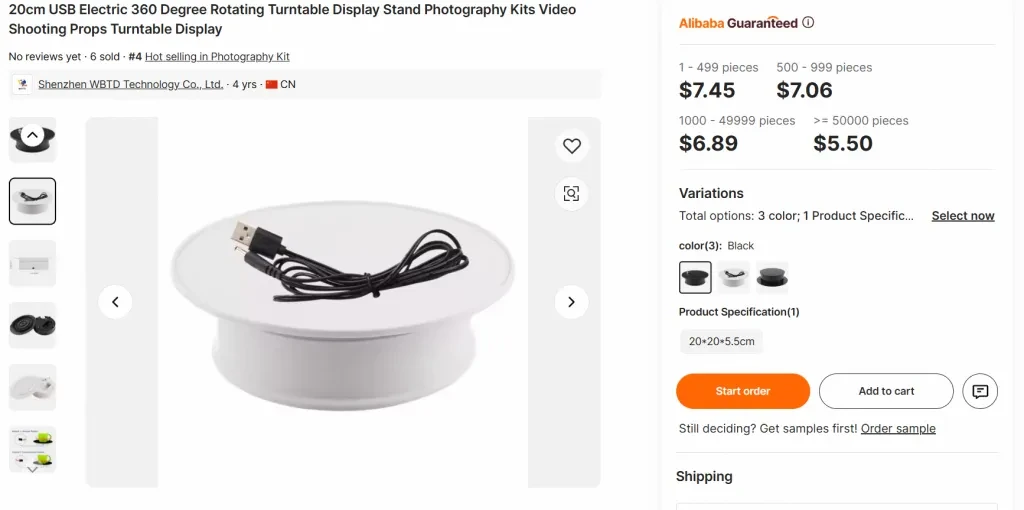
According to Global Market Monitor, experts valued the global photography turntable market at approximately US$ 364 million in 2024. This market is expected to reach around US$ 479 million by 2029, growing at a compound annual growth rate (CAGR) of approximately 7.0% during the forecast period from 2024 to 2029. Advancements in automation, AI integration, and the increased adoption of 360-degree imaging solutions in e-commerce and virtual reality sectors drive the demand.
Growing demand for automation
In 2025, the market for photography turntables is being shaped by a growing demand for automation, driven by businesses seeking to improve workflow efficiency and image quality. Automated turntables, particularly those integrated with advanced software, are becoming indispensable in high-volume environments. These systems reduce the need for manual intervention by automating both the rotational process and the synchronization with cameras. This enables quicker, more consistent image captures, which is essential for businesses that need to create detailed 360-degree product visuals quickly.
Trends in affordability and innovation
Technological advancements in 2025 have also led to an increase in both affordability and innovation in photography turntables. Competition has driven down costs as more companies enter the market, making professional-grade turntables accessible to a wider range of businesses. For instance, affordable models such as the JAKIA and Newerpoint turntables provide essential features like motorized control and adjustable rotation speeds, which were previously only available in higher-end models. This is particularly beneficial for small to mid-sized businesses that need efficient product photography solutions without a hefty price tag.
At the same time, innovation continues to push the boundaries of what turntables can offer. Many 2025 models now include enhanced features like adjustable speeds, bi-directional rotation, and compatibility with camera systems for seamless operation. These advancements improve the quality of images and the overall user experience. Additionally, lightweight and portable options are becoming more common, allowing businesses to easily integrate turntables into their existing photography setups without requiring significant space.
Key factors to consider when choosing a photography turntable
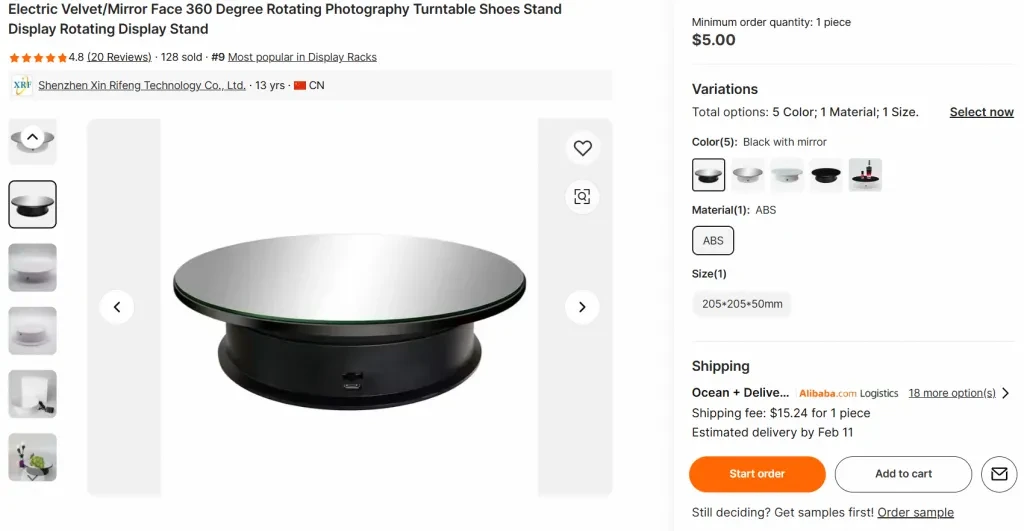
Rotation precision and weight capacity
When selecting a photography turntable, rotation precision, and weight capacity are essential factors that directly affect image quality and workflow efficiency. Rotation precision ensures that the turntable provides smooth and accurate movement, capturing each angle consistently for flawless 360-degree imaging. For professional photography, turntables with finer rotation accuracy (e.g., down to 0.03 degrees) allow for capturing detailed products without misalignment between frames. This precision is crucial for creating high-quality 360-degree product views, especially for items requiring detailed attention, such as jewelry or electronics.
Weight capacity refers to the maximum load a turntable can support without compromising performance. Depending on the size and weight of the products, choosing the right capacity is critical. For example, lighter turntables may work well for smaller items, while higher-capacity models are essential for handling bulkier items like furniture or industrial products. It’s important to ensure that the turntable’s weight limit aligns with the range of items the business frequently photographs, preventing mechanical strain that could affect rotation precision and product safety.
Software compatibility and control options
Software compatibility plays a pivotal role in the efficiency of modern photography turntables. Many advanced turntables integrate seamlessly with photography software, allowing synchronized control between the turntable and the camera. This ensures automated processes for capturing multiple images at precise angles without manual intervention. Businesses handling large volumes of products benefit from this level of automation, as it significantly reduces setup time and minimizes errors.
Furthermore, turntables with comprehensive control options—such as adjustable speed, directional rotation, and programmable settings—offer greater flexibility in managing various photography sessions. Turntables that support cloud-based operations or wireless controls provide even more versatility, allowing for remote management of multiple workstations. This integration simplifies workflow, making the process more efficient, especially in large-scale operations.
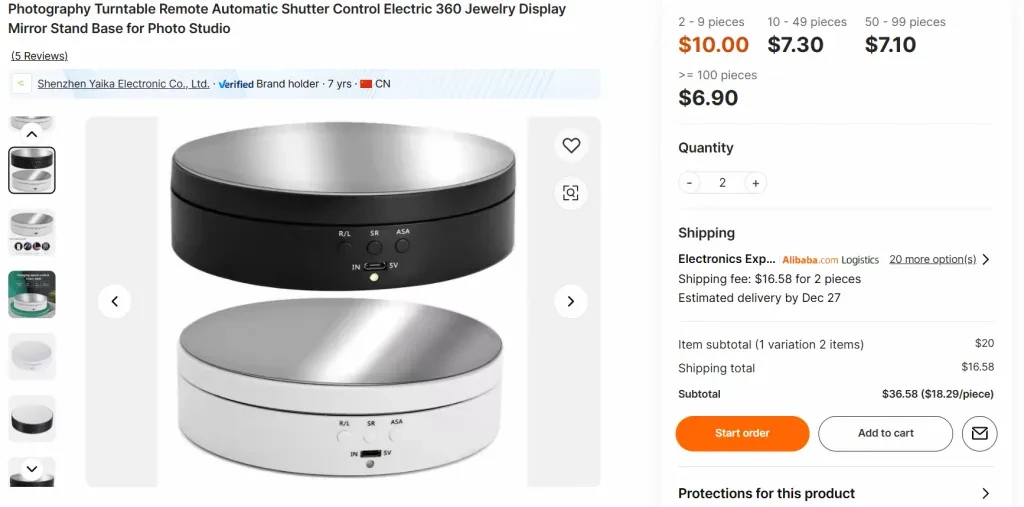
Durability and ease of use
Durability is a critical consideration, particularly for businesses with heavy usage demands. Turntables constructed from robust materials, such as reinforced metal, are more resistant to wear and tear, ensuring longevity and consistent performance. A well-constructed turntable minimizes vibrations and wobbling during operation, which are common issues that can affect image quality. Choosing a durable model can prevent frequent breakdowns, lowering the total cost of ownership over time.
Ease of use is another factor that impacts the workflow. Turntables designed with intuitive controls and simple interfaces allow operators to adjust settings quickly and effectively. Features like remote control operation and programmable rotations enhance usability, reducing the need for frequent manual adjustments. This simplicity in operation is particularly beneficial in fast-paced environments, where efficiency is key. Additionally, turntables that offer easy setup and maintenance can save time and minimize interruptions during production.
Leading photography turntable models and their standout features
High-end models for professionals
Top-tier turntables offer unmatched precision, durability, and automation features for professional-grade photography. One of the leading brands in this segment is Iconasys. Their Platinum LRG Series provides exceptional accuracy with rotational precision down to 0.03 degrees, ensuring consistent imaging results. These turntables support large, heavy objects with a load capacity of up to 300 lbs (136 kg), making them suitable for industries dealing with oversized products like automotive parts or large appliances. The integrated software lets users automate photography, including capturing, editing, and producing high-resolution 360-degree images. Models in this series also feature variable speed control and bi-directional rotation, further enhancing their flexibility for diverse product sizes.
Another notable option is the Ortery Infinity Series, known for its integration with dimmable LED lighting, allowing for perfect shadow-free images on white or transparent backgrounds. This series is ideal for professionals working with large products and high-volume tasks, as it provides synchronized control over lighting, camera settings, and rotation. The Infinity Series’ ability to capture 360-degree stills and videos makes it a comprehensive solution for advanced e-commerce and product marketing.
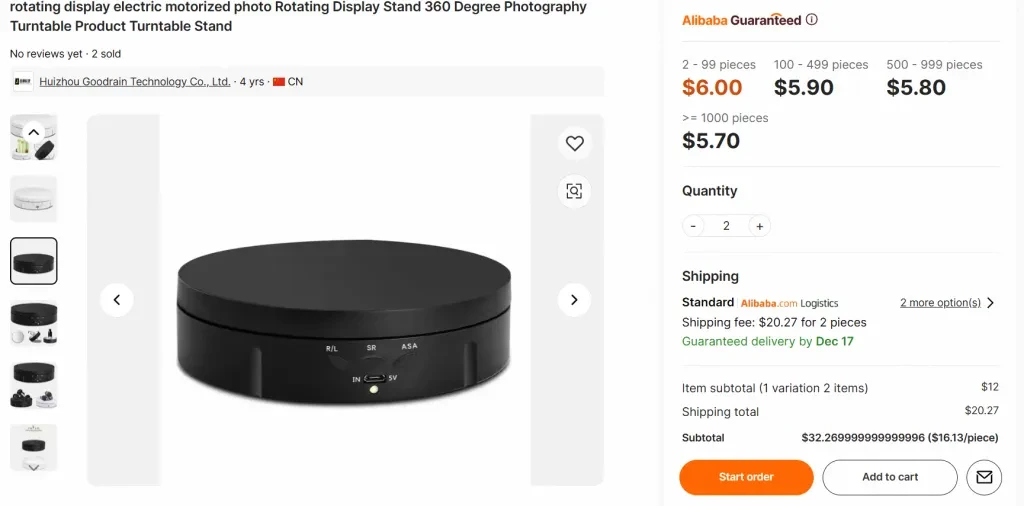
Affordable yet effective models
For businesses looking for budget-friendly yet effective options, the ComXim 360 Degree Turntable offers excellent value. This model supports up to 88 lbs and includes adjustable speed settings, making it a versatile option for small to medium-sized products. The ComXim turntable also has features like wireless remote control and bi-directional rotation, offering smooth and consistent results for smaller-scale photography setups. It’s popular for capturing items like electronics, accessories, and smaller home goods.
The Foldio360 by Orangemonkie is another great budget-friendly option. It’s designed for small items, with a load capacity of around 11 lbs, making it perfect for jewelry or gadgets. This model is lightweight, portable, and integrates with smartphones, making it highly accessible for those who need a simple, easy-to-use solution. Despite its affordability, it offers excellent image quality and integrates with Foldio’s lighting systems to ensure consistent photos.
Conclusion
Choosing the right photography turntable depends on the business’s specific needs, including the size of products, workflow efficiency, and budget. High-end models like the Iconasys Platinum LRG and Ortery Infinity Series offer superior precision, automation, and the ability to handle heavier products, making them ideal for large-scale operations. For smaller setups, budget-friendly models like the ComXim 360 Degree Turntable and Foldio360 provide great functionality without the high cost, making them suitable for light products like jewelry or gadgets. Both categories offer features that streamline the photography process, but businesses should carefully evaluate their operational requirements to find the best fit. By focusing on key factors such as precision, weight capacity, and software integration, businesses can make an informed choice to enhance their product photography workflows.




